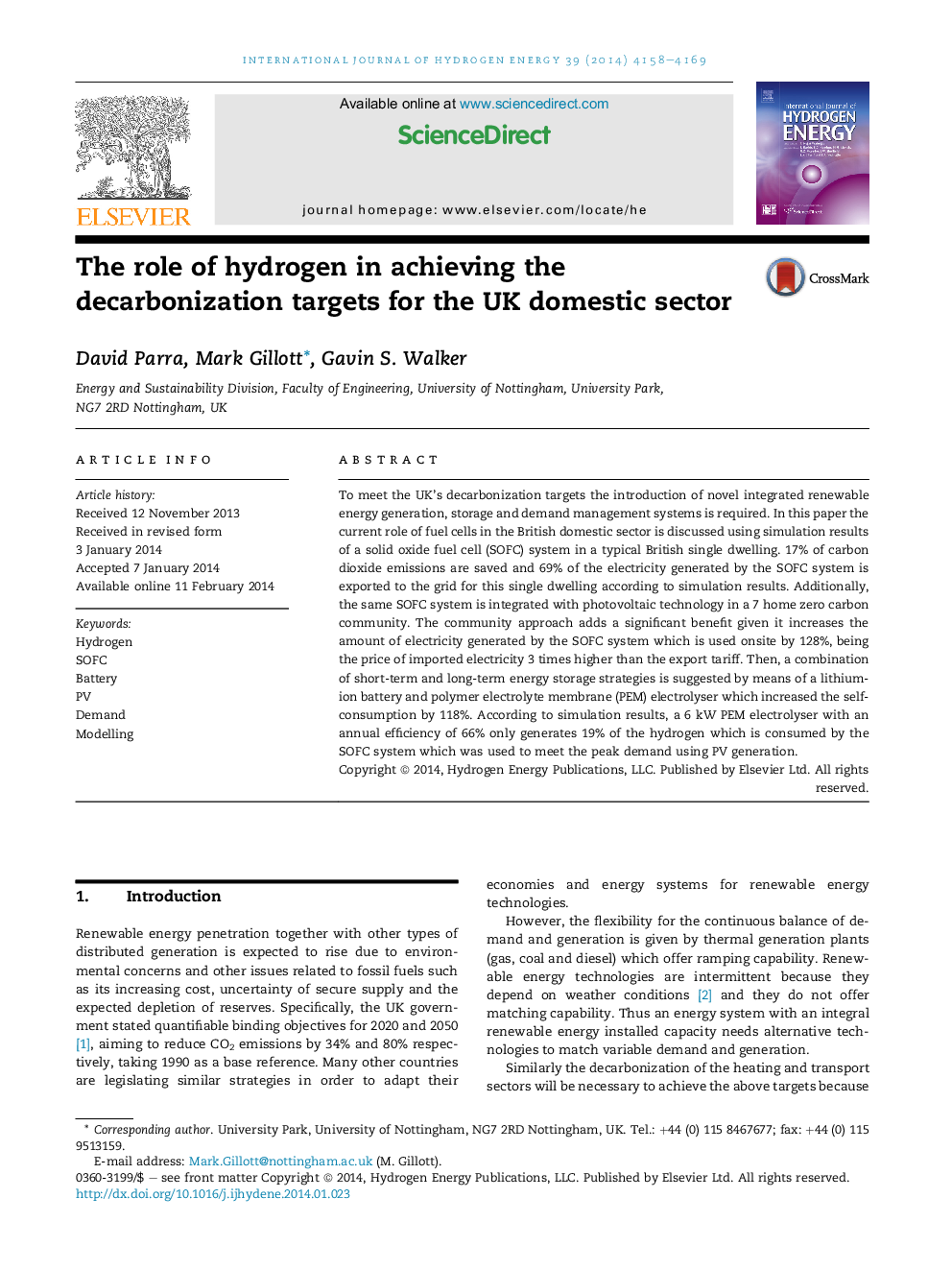| Article ID | Journal | Published Year | Pages | File Type |
|---|---|---|---|---|
| 1270503 | International Journal of Hydrogen Energy | 2014 | 12 Pages |
•Comparison of a 1.2 kW SOFC system in a single house and a 7 home community.•The SOFC system only achieved a 17% CO2 emissions reduction in a British home.•69% of the electricity is exported in the single home reducing its value one-third.•A 7 home community increased the 1.2 kW SOFC system's self-consumption by 128%.•A community PEM electrolyser could only generate 19% of the H2 needs from PV energy.
To meet the UK's decarbonization targets the introduction of novel integrated renewable energy generation, storage and demand management systems is required. In this paper the current role of fuel cells in the British domestic sector is discussed using simulation results of a solid oxide fuel cell (SOFC) system in a typical British single dwelling. 17% of carbon dioxide emissions are saved and 69% of the electricity generated by the SOFC system is exported to the grid for this single dwelling according to simulation results. Additionally, the same SOFC system is integrated with photovoltaic technology in a 7 home zero carbon community. The community approach adds a significant benefit given it increases the amount of electricity generated by the SOFC system which is used onsite by 128%, being the price of imported electricity 3 times higher than the export tariff. Then, a combination of short-term and long-term energy storage strategies is suggested by means of a lithium-ion battery and polymer electrolyte membrane (PEM) electrolyser which increased the self-consumption by 118%. According to simulation results, a 6 kW PEM electrolyser with an annual efficiency of 66% only generates 19% of the hydrogen which is consumed by the SOFC system which was used to meet the peak demand using PV generation.
